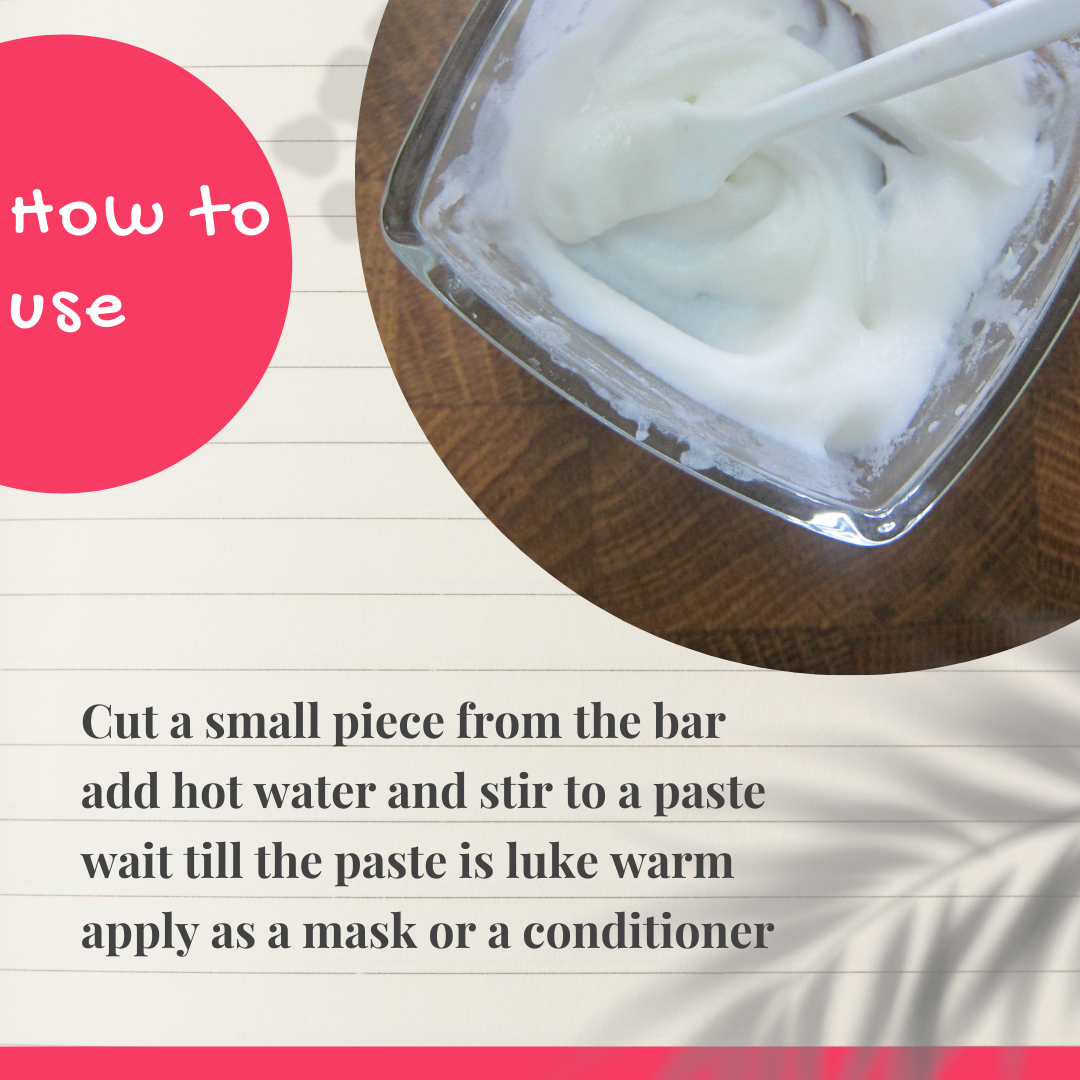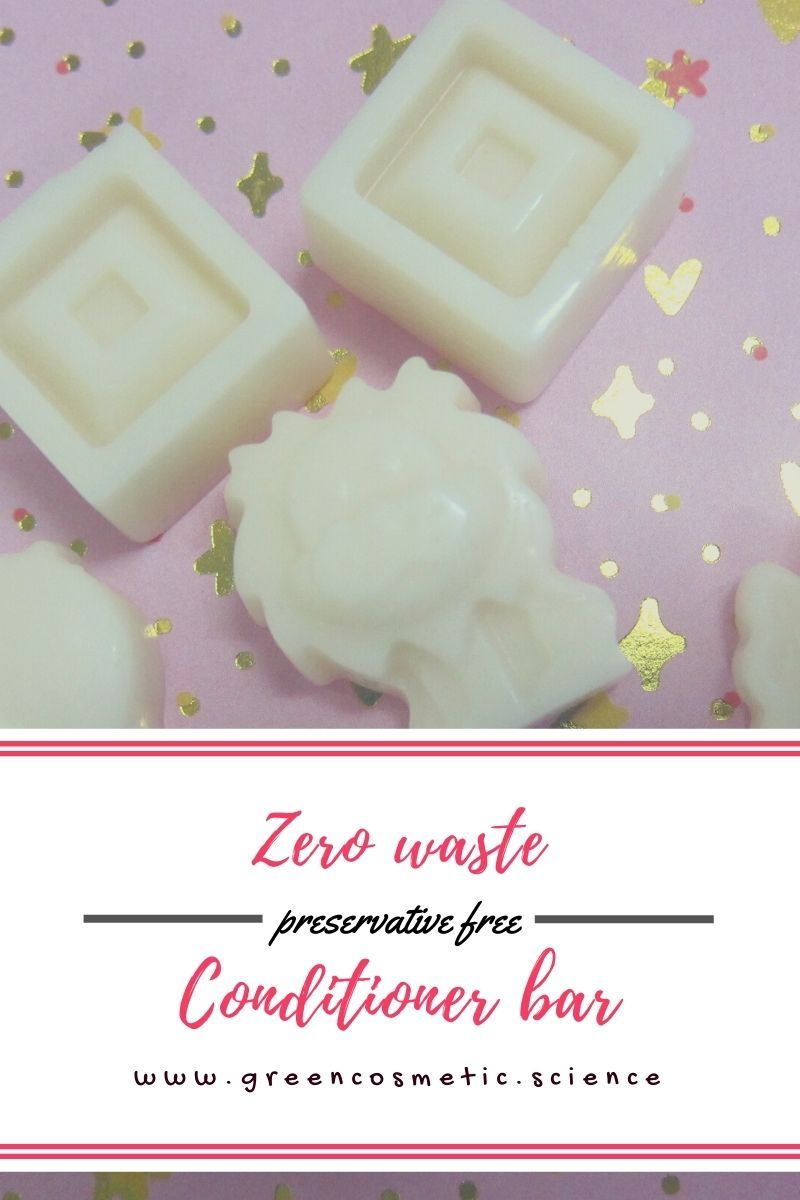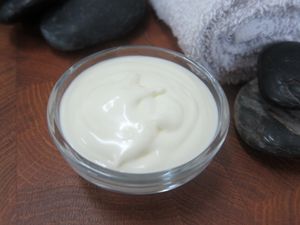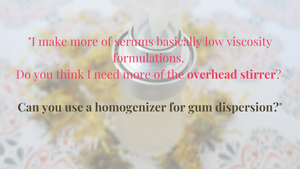Everything bar (not the bar that you go in and get drunk and forget the world, the bar like a bar of soap) is extremely popular at the moment because:
1- You don't use huge amounts of water during the production (water is one of the most precious resources on earth, has always been and will always remain)
2- You don't sell/purchase water and you don't pay for water transport
3- You don't need any preservative
4- You don't need any plastic for packaging
Last year we shared the tutorial for making conditioner bars with Aminosensyl HC but since we are not selling some of the ingredients in that tutorial we have reformulated for you.
Technically you can create these cute pieces in any size and shape but it is better to make them in small pieces so that they are easily used up and do not sit in the bathroom in a water pool.
In contrast to a shower bar or shampoo bar you can not use these bars directly over your hair and scalp. Just cut a small piece, add hot water to it and blend the piece to a smooth paste. You can adjust the viscosity by adding more or less water to the bar. Wait a while for the paste to become lukewarm (do not apply the hot paste over the hair and scalp) and apply it either as a conditioner mask or a rinse-off conditioner.

What you need to consider before starting the formulation
Buffering
We are working with the green conditioner base in this formulation and the products made with this ingredient must be buffered to avoid pH drift and instability.
You need to add a lactic acid/ lactae buffer to the conditioner no matter what the end pH would be. (We have a detailed post about buffering cosmetic formulations in our members' only portal if you want to know more about this subject)
For small laboratory batches prepare the buffer solution by mixing the following @RT. Keep the buffer in a closed bottle in the fridge and use the content within 2 weeks:
Sodium lactate (50%) 42%
Lactic acid (80%) 8%
Water t0 50,0%
We have used 4% of this buffer solution in the video

pH measurement
You can see in the video that we take a sample for pH measurement then pour the melted product into the mold cavities and after bringing the molds into the fridge come back and measure the pH. With this bar and almost every other bar formulation there is no time for pH adjustment. You can measure the pH but since the product will solidify very fast you don't have time to dilly dally with the pH. The only way to adjust the pH is by "trial & horror". This means you need to make small batches, measure the pH and then depending on the pH you get add lees or more acid or base in the next batch. Usually you need about 2-3 batches to figure out how much acid or base you need to land in the pH range you will. After figuring out the amount of the acid or base, scaling up will be easy.
For this consitioner base the optimum pH range is between 3-5. We aimed for a pH between 3-4,5 and our final pH is 3,21.
Formulation and procedure:
| Phase A | Dosage |
|---|---|
| Green conditioner base | to 40,0% |
| Sunflower lecithinl | 0,5% |
| Olive squalane | 5,0% |
| Babassu oil | 12,0% |
| Berry wax | 8,0% |
| Myrica fruit wax | 3,0% |
| Macadamia oil | 10,0% |
| PCA glyceryl oleate | 1,0% |
| Phase B | |
| Glycerine | 5,0% |
| Chelator PA3 | 0,1% |
| Na-gluconate | 0,1% |
| L-Arginin | 0,4% |
| D-Panthenol | 1,5% |
| Phase C | |
| Buffer solution | 4,0% |
| Phase D | |
| Green silicone alternative | 8,6% |
| Tocopherol | 0,3% |
| Ylang-ylang oil | 0,5% |
1- Add all of the ingredients in phase A together in a heat proof beaker
2- Heat phase A in a water bath between 80-85 C
3- Blend phase B and D separately in other beakers. It takes a while till the powders dissolve in phase B
4- When all of phase A is melted remove the beaker from heat. Add phase B then the buffer and at the end phase D.
5- Take a sample for pH measurement
6- Pour the melted product into mold cavities. If it starts to build lumps and hardens till you take the pH sample heat the beaker in the water bath again for a short while.
7- Bring the molds into the fridge
8- Come back to the pH sample. Prepare a 10% dilution. Use distilled water at room temperature. Blend and measure the pH. In our case it was 3,21. I would perhaps add 0,05% more arginin to shift the pH to 4,5 in a second trial.
9- Remove the molds from the fridge. The pieces must be hard enough after about half an hour. Take them out of the cavity and pack and wrap them as you want.
Watch the video here
Stay safe and creative


